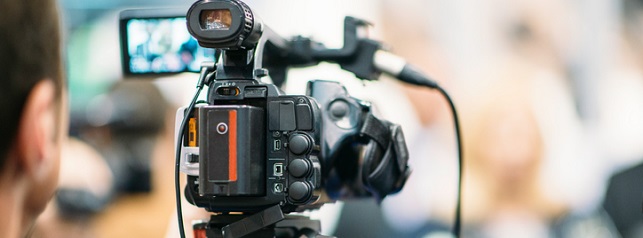
Between the venue, speakers, catering, and marketing, associations spend millions of dollars each year hosting continuing education events and conferences.
So, why not get more bang for all those bucks? You can do just that when you capture your live presentations and repurpose them in your association’s content library. You can share materials with attendees, as an added benefit, and even charge non-attendees money for access to these value resources.
Having worked in the live capture and video production business for more than a decade, I’ve seen just about every mistake in the book. Here, I share wisdom from the team to help you avoid these mishaps for a successful event capture …
Before Your Event
Most of an event planner’s heavy lifting is going to take place well in advance of the event. In this planning phase, you should:
Determine your venue – In some cities (including Chicago, Las Vegas, New York City, Philadelphia, and San Francisco) labor regulations dictate you hire local laborers to work with the event capture team. And in some cases, even a specific venue, like a hotel or conference center, will have special requirements, even if the city doesn’t. This could add extra expenses to your budget, so make sure you know the regulations.
Outline your expectations – Which sessions do you want to record? Just your keynotes? Or maybe keynotes and a select number of breakout sessions? What will you do with the recorded sessions? Sell them online, or are you planning to supplement your in-person event with a virtual conference?
Identify a vendor – Once you have your expectations clearly defined, you’ll want to find a vendor who has a track record for achieving your goals.
Meet with selected vendor – Your event capture team will need to know about the IT and AV that’s available onsite. They’ll want to know in what rooms they’ll be setting up and the configuration of those rooms. Ideally, the breakout sessions you want recorded should all be scheduled in one room for consistency. This also avoids the team having to run miles (and haul equipment) from session to session, room to room.
Brief your speakers – You can’t overcommunicate when it comes to the speakers who will be recorded. And, I can’t tell you the number of times I’ve introduced myself to presenters right before their breakout sessions were about to begin and they had no idea they were going to be recorded. Granted, your speakers are professionals, so they’re used to engaging a roomful of attendees. But, they may not be thinking about the virtual audience. For example, they may say, “Oh, my voice is booming; I don’t need a mic.” But, they will most certainly need a mic for recording purposes. Communicate. Communicate. Communicate.
Get any materials over to your vendor – Will your presenters have handouts? PowerPoint decks? You’ll need to get all materials over to the vendor at least a week before the live capture. This is particularly imperative if you’re hosting a virtual conference – because you’ll want virtual attendees to have access to all the same materials as conference goers in the room.
Onsite
Arrive early – As a best practice, your production team should arrive the day before your event to get the lay of the land. They’ll want to meet with the onsite AV team, go over requirements, and put their eyeballs on the rooms in which they’ll be setting up and recording.
Set-up – The team should set up and test equipment early morning of Day One.
Post Event
Editing – Ideally, before your vendor leaves the venue, you should communicate what edits you want made to the raw footage. For example, do you want housekeeping comments or Q&A cut out or trimmed down? Do you want the team to add intro slides? Did you capture a session with three presenters, one of whom didn’t give you permission to film him? All of this will impact the editing process. And, if the production team doesn’t have this information immediately on the heels of the live capture, it will delay post-event production work.
Review Recorded Assets – Once editing is complete, you should review everything that’s uploaded into your learning portal to determine if you need any additional editing.
Marketing – Make sure to tell your conference goers the materials are all available for free download, as an added perk for attending. And, market the recorded sessions to non-attendees as a way to extend your non-dues revenue.
At Community Brands, we built a content portal that includes 145 recorded education sessions from our inaugural user conference, Xperience 2018. If you attended, an account has already been created for you in the Session Library, giving you free access to content and your continuing education certificates. Recorded sessions are also available for purchase to those who weren’t able to attend.